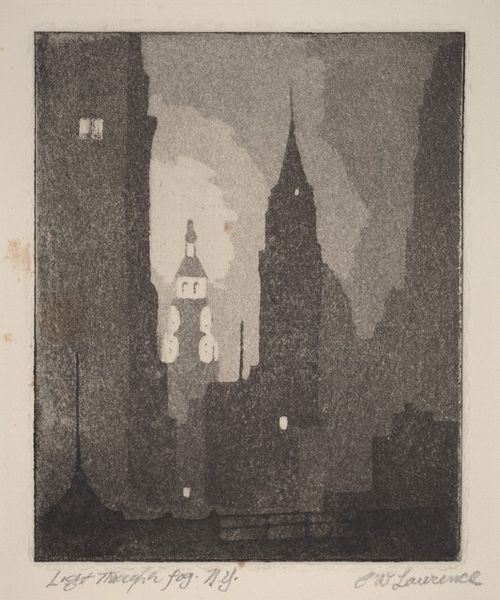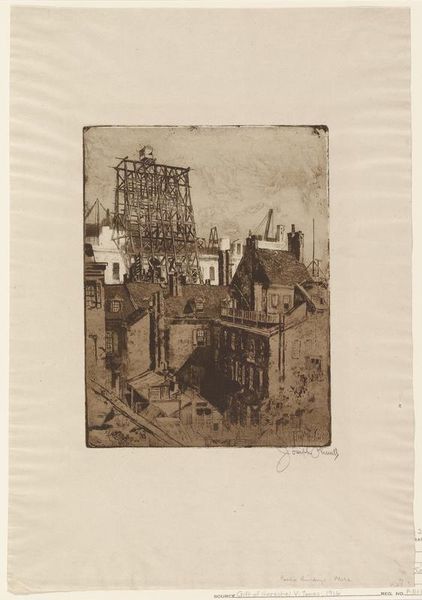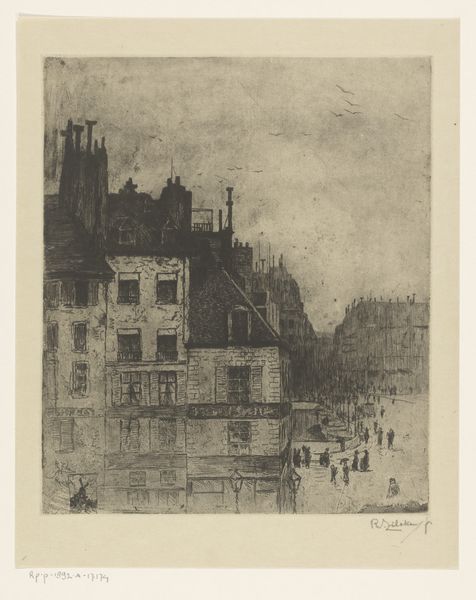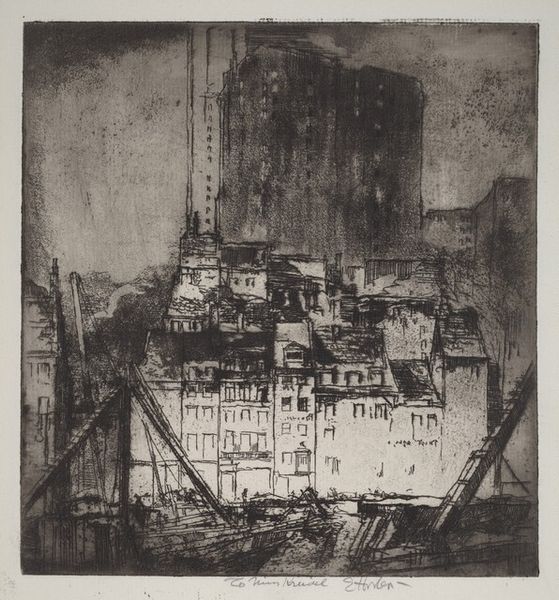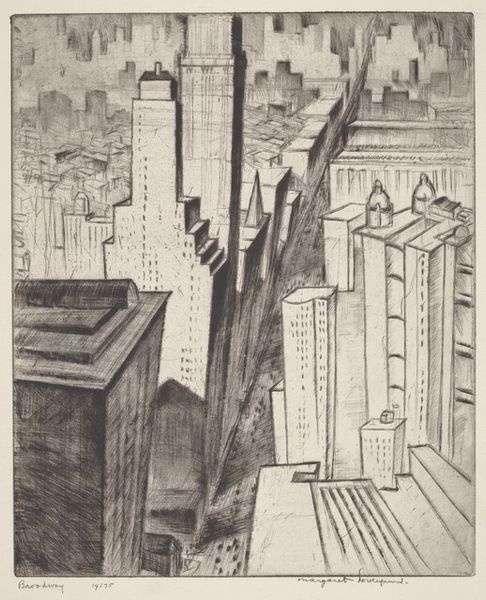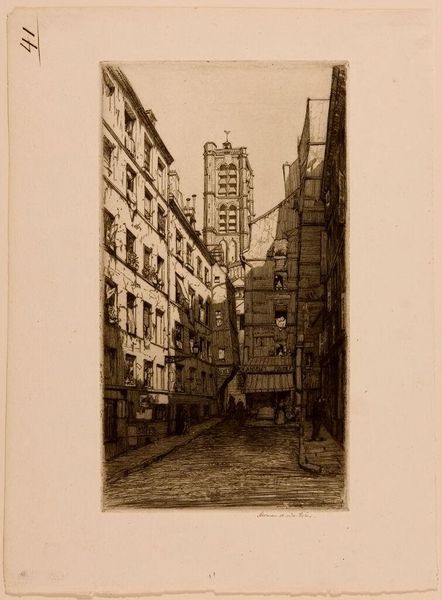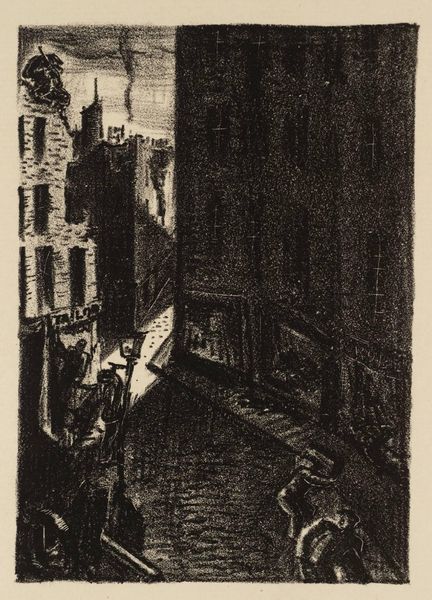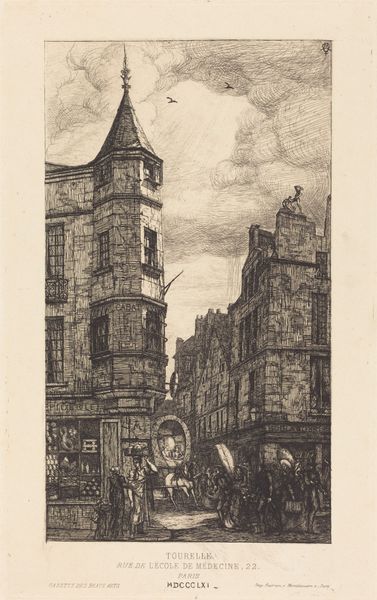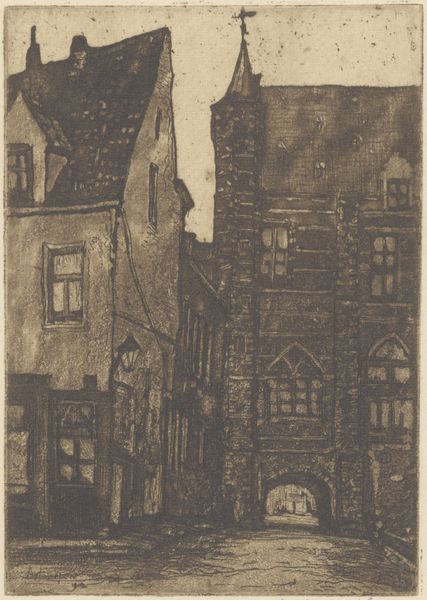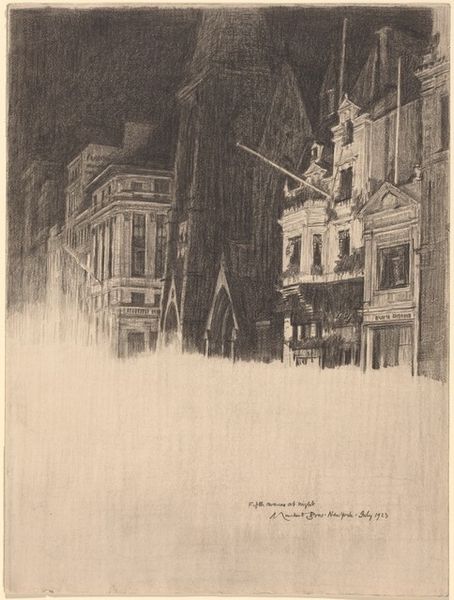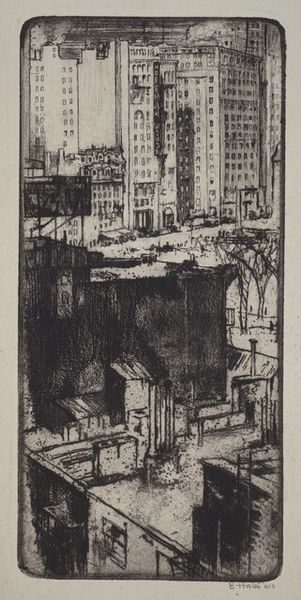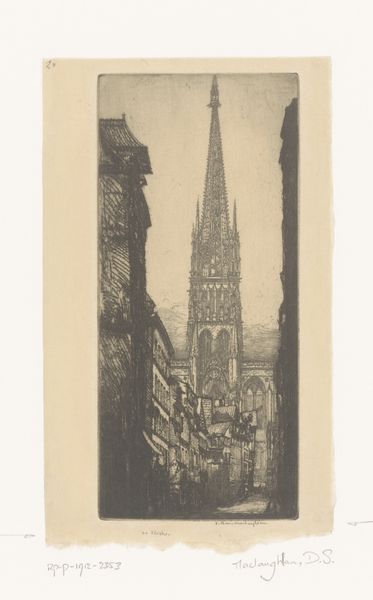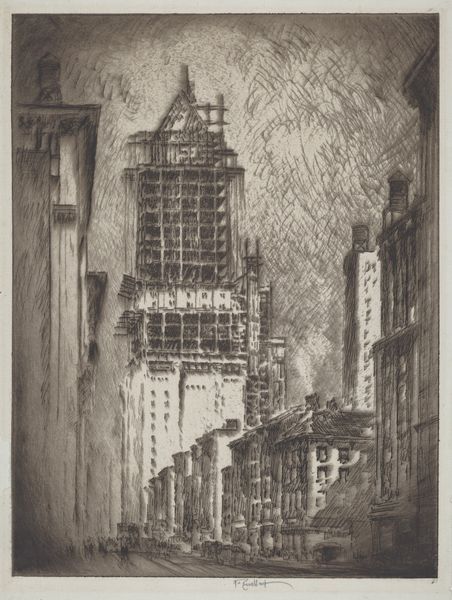
print, etching
# print
#
etching
#
cityscape
#
realism
Dimensions: Sheet: 337 x 457 mm
Copyright: National Gallery of Art: CC0 1.0
Curator: "The Dark Tower," etched in 1919 by Earl Horter, offers us a cityscape cast in shadow. There's a palpable mood of solitude in this realistic print. What are your initial thoughts? Editor: It strikes me first as being intensely textural, almost obsessively so. You can see Horter's commitment to conveying every plane, brick, and shadow. The density of those etched lines creates a powerful sense of materiality, it is about the physicality of the urban landscape as a system made up of parts. Curator: Exactly. Horter, throughout his career, engaged with the visual language of American modernism, specifically looking at how it interacted with architecture. Note the contrast between the Gothic spire—evoking traditional, sacred spaces—and the flat-roofed buildings representing modern, secular life. Doesn’t that juxtaposition say something about the shifting cultural values of the early 20th century? Editor: Certainly, but the means by which he represents it matters just as much. Look at the way the hatching and cross-hatching is used across different planes, really pushing the texture and, I would say, labor to the forefront. We’re meant to *feel* the making here. How do the decisions involved in etching relate to this supposed shift in cultural values you point out? Curator: That’s a sharp observation! The density and repetition evoke a sense of anxiety or the weight of industrial progress perhaps, it's about visualizing modernity, with all its inherent conflict, even moral decay. In many traditions darkness conceals fear but also suggests great mysteries. Is the so-called “dark tower” of progress ultimately sinister? Editor: Fascinating. Maybe the medium is part of the message, mirroring that repetitive factory labor by applying layers of etched marks. It also speaks to the process by which modern cities are developed - one element, like those small bricks, repeatedly constructed on top of another. Curator: An urban labyrinth made physical by ink and the impress of metal. "The Dark Tower," indeed, leaves us contemplating what our symbols of progress truly signify, materially and metaphorically. Editor: For me, it emphasizes the urban landscape as a space for continued negotiation; etched, reformed, and endlessly re-produced.
Comments
No comments
Be the first to comment and join the conversation on the ultimate creative platform.
